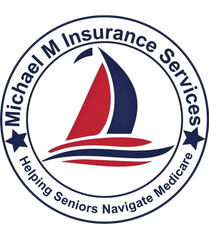How next year’s updates compare to 2025, and what it means for you
Medicare changes a little bit every year. Deductibles shift, premiums rise (sometimes more than
we’d like), and certain protections expand. While the numbers are important, what really matters
is how these changes affect your wallet and your peace of mind .
Let’s take a closer look at what’s different in 2026 compared to 2025 — and what you should
keep in mind as you review your coverage this fall.
In 2026, the Part A deductible rises to $1,716 , up from $1,676 in 2025. Hospital coinsurance
also ticks up slightly — $429 per day for days 61–90, compared to $419 in 2025. Skilled
nurs0ing facility costs climb too, moving from $209.50 per day to $214.50 for days 21–100.
What this means for you: These are relatively small increases, but if you experience a
hospital stay or need skilled nursing care, they can add up quickly. It’s another reason why having the right supplemental coverage matters.
Part A (Hospital Insurance)
Here’s where the biggest jump happens. The Part B monthly premium is projected to be
$206.50 in 2026 , up from $185 in 2025. The annual deductible also rises — from $257 to $288.
Coinsurance remains the same at 20% once the deductible is met.
What this means for you: This is one of the largest Part B premium increases we’ve seen
in recent years. For retirees on fixed incomes, even $20 more a month can strain the budget. It’s especially important to weigh whether your current plan is still the most cost-effective for your needs.
Part B (Medical Insurance)
Medicare Advantage (Part C)
There’s a small bit of good news here. The maximum out-of-pocket limit (MOOP) for
Advantage plans drops slightly , from $9,350 in 2025 to $9,250 in 2026.
What this means for you: While a $100 decrease may not sound like much, it does provide a little extra protection if you have a bad health year. Still, remember
Medicare Part D (Prescription Drug Coverage)
Prescription drug coverage continues to evolve under the Inflation Reduction Act. In 2026:
- The annual out-of-pocket cap rises to $2,100 up from $2,000 in 2025.
- The maximum deductible climbs to $615 up from $590.
- The average monthly premium is projected to decrease — from $38.31 down to $34.50.
- Insulin stays capped at $35 for a one-month supply, or 25% of its negotiated price (whichever is less).
- Vaccines recommended by the CDC remain free of cost-sharing.
What this means for you: Even with a slightly higher out-of-pocket cap, the average premium drop is welcome news. Seniors with high medication costs should still see significant protection compared to years past.
Higher-Income Premium Adjustments (IRMAA)
For those with higher incomes, Medicare’s income-related monthly adjustment amounts (IRMAA) are also increasing. In 2026, the surcharge applies to individuals with incomes above $109,000 (up from $103,000 in 2025), or $218,000 for couples.
What this means for you: If your income is near these thresholds, tax planning becomes even more important. The monthly surcharges range from $82.60 up to $495.60 on top of your standard premium.
Pulling It All Together
So, what’s the big picture?
- Hospital and doctor costs are inching upward.
- Part B premiums are taking a sharp jump.
- Medicare Advantage offers a little more protection with a lower MOOP.
- Prescription coverage continues to improve, especially for those on expensive medications.
- High-income retirees will see steeper surcharges.
Key Takeaway
2026 brings a mix of challenges and opportunities. Costs are rising in some areas, but drug coverage protections are stronger, and Advantage plans offer a bit more out-of-pocket relief.
The smartest move? Review your coverage during AEP. Make sure your doctors,
prescriptions, and budget are all still aligned with the plan you’re in. And remember — you don’t have to sort through all these details alone. Schedule time with your broker to review your
options carefully, so you head into 2026 with clarity and confidence.

